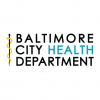Baltimore City Health Department Finds Health Improving Across City
Wednesday Mar 29th, 2017
FOR IMMEDIATE RELEASE
Agency releases 2017 Neighborhood Health Profiles and BCHD White Paper detailing health outcomes, priorities
BALTIMORE, MD (March 29, 2017) – Today, the Baltimore City Health Department (BCHD) issued the latest editions of its Neighborhood Health Profiles and 2017 BCHD White Paper, outlining the state of health in Baltimore, previous accomplishments, and strategic priorities.
The 2017 Neighborhood Health Profiles measure 60 health indicators across 55 clusters of neighborhoods in Baltimore, known as Community Statistical Areas (CSA), providing a detailed analysis on the state of health in these these CSAs as well as for the city as a whole.
Previous editions were published in 2008 and 2011.
“All residents of Baltimore – no matter the neighborhood they call home – have the right to good health and well-being,” said Mayor Catherine E. Pugh. “Our city’s success depends upon the health of our communities and those living in it. I look forward to continuing our work to ensure that every person in every neighborhood has the same opportunity to live and thrive.”
Since the 2011 Neighborhood Health Profiles, health improved among several of the indicators citywide, including:
- Life expectancy increased by nearly two years while mortality rates decreased by nearly 10 percent
- Teen birth rates decreased 35 percent
- More kindergarteners were assessed as “ready to learn,” from 65 percent to nearly 78 percent
- Fewer children tested positive for elevated blood lead levels, from approximately 3 percent among those tested in 2011 to 1 percent in 2017
There are 14 new measures included this year that did not appear in previous editions.
“The Neighborhood Health Profiles are tools that can be leveraged as we fight for health equity and social justice in Baltimore. With an understanding of our baseline, we can chart a course for achieving our goal of improving health and reducing disparities,” said Baltimore City Health Commissioner Dr. Leana Wen. “I encourage all of our partners and residents to use these reports as a resource to advocate for health and wellness in their communities.”
In addition, the Baltimore City Health Department also released the 2017 BCHD White Paper, summarizing state of health in Baltimore and progress made to improve health, the agency’s policy aspirations, and anticipated challenges for four key public health topics: behavioral health, violence prevention, chronic disease prevention, and life course and core services.
These four topics align with the priority areas outlined in Healthy Baltimore 2020, a strategic blueprint for health in the city launched in September 2016. In the plan, BCHD committed to cutting health disparities across Baltimore over the next decade.
“We aim to improve health, but we recognize that this is not enough,” said Dr. Wen. “We must ensure that every resident – regardless of their age, race, income, or neighborhood – has the opportunity to lead a healthy, full life.”
The 2017 Neighborhood Health Profiles are available at: health.baltimorecity.gov/neighborhood-health-profile-reports.
The 2017 BCHD White Paper is available at: health.baltimorecity.gov/whitepaper2017.
